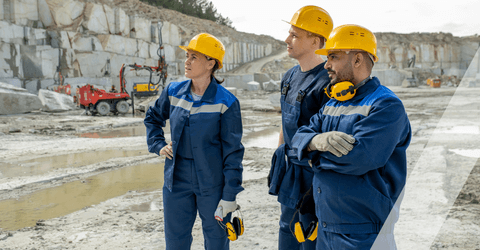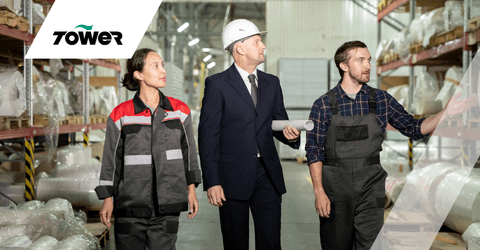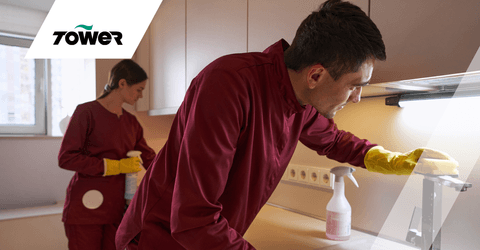
This guide will clarify the key differences between workwear and PPE. We will also explain the degrees of protection they both offer and how to ensure you choose the correct workwear or PPE for each task and role.
The standard items of protective clothing tend to vary depending on what type of work you do. Specialist jobs such as health practitioners or firefighters will require workwear to protect them from hazardous substances or environments.
Some examples of normal workwear would be a polo shirt, trousers, or a skirt. Safety boots, base layers or a jacket are also examples of workwear for those who frequently work outside.
Workwear can also include branded clothing and corporate clothing or uniforms. While these garments may not provide protection, they are designed to enhance professionalism and help employees represent the brand at work.

While the term workwear covers a broad range of clothing, there’s a level of quality expected across these items. Workwear needs to be durable enough so it can last beyond years of wear and withstand multiple washes.
Workwear should be made with quality materials and have resistance to wear and tear. Workwear in some cases even has flame and chemical resistance for specialised protection.
Only clothing with a special EN Standard health & safety requirement is classed as PPE. But even if workwear is not providing specialised protection, it is still much more practical and less hazardous than ordinary clothing.
There are several things to consider when selecting PPE for a job. This includes asking yourself: What are the hazards? Who is exposed? What hazards are they exposed to? How long and how often are they exposed to these hazards?
If you are unsure what PPE you need to protect your employees, always check with your supplier to see what the most appropriate option would be. Once you have chosen your PPE it must be given to employees free of charge.

The key to finding the correct workwear is understanding your requirements and having an idea of what you may need. This will help your supplier to meet your requirements and offer appropriate recommendations or alternatives.
Considering the functionality and the lifecycle of the garments worn by employees will help you find what is best for your workers. Budget and quality also play a significant role in finding the right workwear for your employees.
What quality and cost balance are you looking for? Remember that investing in the right workwear is more than just compliance. Your employees are your most valuable resource and key to your success. Keeping them safe is essential.
Although workwear doesn’t normally add any additional protection compared to normal clothing, workwear classed as PPE does. An example of PPE workwear is Hi Vis clothing such as flame-retardant overalls.
Workwear doesn’t always have to be PPE to offer more protection than ordinary clothing. This includes protective coveralls for kitchens, which are not fire-resistant PPE but are an appropriate practical solution for the work.
As PPE is designed to offer a standard level of protection, typical workwear might not be good enough for the job. EN standards regulations stress the importance of what workers need to wear in the correct environments.
When you don’t have the right clothing for the job you are putting yourself and your colleagues at risk. Knowing the difference between workwear and PPE ensures your workers will be safe and comfortable as they go about their work.
Fill out a contact form below to talk to our experts about your workwear and PPE requirements or call us on 01202 718000.